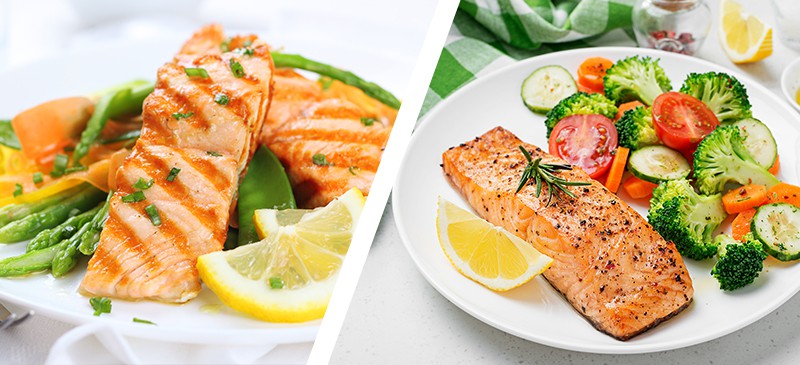This Dr. Axe content is medically reviewed or fact checked to ensure factually accurate information.
With strict editorial sourcing guidelines, we only link to academic research institutions, reputable media sites and, when research is available, medically peer-reviewed studies. Note that the numbers in parentheses (1, 2, etc.) are clickable links to these studies.
The information in our articles is NOT intended to replace a one-on-one relationship with a qualified health care professional and is not intended as medical advice.
This article is based on scientific evidence, written by experts and fact checked by our trained editorial staff. Note that the numbers in parentheses (1, 2, etc.) are clickable links to medically peer-reviewed studies.
Our team includes licensed nutritionists and dietitians, certified health education specialists, as well as certified strength and conditioning specialists, personal trainers and corrective exercise specialists. Our team aims to be not only thorough with its research, but also objective and unbiased.
The information in our articles is NOT intended to replace a one-on-one relationship with a qualified health care professional and is not intended as medical advice.
14 Best Fish to Eat, Plus Recipe Ideas
November 28, 2019

Rich in heart-healthy fats, protein and a megadose of important vitamins and minerals, there’s no doubt that fish can be a great addition to a balanced diet. In fact, many health organizations like the American Heart Association even recommend squeezing at least two servings into your diet per week to boost heart health and protect against disease. But have you ever wondered what’s the best fish to eat for health?
Not all types of fish are created equal, and many varieties bring an entirely different set of nutrients to the table. Plus, there are several kinds of fish that you should avoid altogether due to factors like high mercury levels, depleted stocks or overfishing.
So what is the best fish to eat for health? Keep reading for 15 of the healthiest and most sustainable options, perhaps as part of a pescatarian diet, plus some healthy recipe ideas to fit a few more servings into your weekly menu.
Best Fish to Eat
1. Mackerel
Mackerel is a type of saltwater fish that is well-known for its rich taste and flaky texture. In addition to being incredibly flavorful, mackerel is also loaded with omega-3 fatty acids, vitamin B12, selenium and niacin.
Keep in mind that certain types are often high in mercury, including King mackerel. Atlantic mackerel, on the other hand, is a better and safer option to help keep your mercury consumption under control.
Mackerel is available canned and fresh and may be grilled, baked, roasted or pan-seared for a quick and convenient main course. It makes a great addition to everything from curries to risottos and can even be incorporated into a tasty Mackerel Salad.
2. Tuna
Tuna is a group of about 15 different species of fish, all of which belong to the Thunnini tribe. Not only is tuna one of the most commonly consumed types of fish, but it’s also one of the most nutritious, with a hearty dose of selenium, niacin, vitamin B12 and anti-inflammatory omega-3 fatty acids packed into each serving.
Ideally, it’s best to stick to varieties that are low in mercury and skip other types such as bluefin tuna or bigeye tuna. Wild-caught canned tuna, in particular, is a great alternative and can be easily used to give recipes like Tuna Pasta Salad a heart-healthy twist.
3. Cod
Cod is a popular type of fish with a mild taste and flaky flesh. Compared to other fish, it’s also much leaner and lower in calories, making it one of the best fish to eat for weight loss. Plus, it’s high in B vitamins and selenium to help support better health.
Be sure to steer clear of Atlantic cod, which is now considered a vulnerable species due to overfishing. For a more sustainable option, look for Alaskan cod caught with a longline, pot or jig and use it to make this Greek-Style Baked Cod recipe with lemon and garlic.
4. Sardines
Sardines are a type of small, saltwater fish that belong to the Clupeidae family and are closely related to herrings. They’re one of the few fish rich in vitamin D and, with nearly 23 grams of protein in each can, they’re also one of the best fish to eat for protein.
Opt for wild-caught Pacific sardines whenever possible and select cans that are free of BPA, which is a type of chemical that can be harmful to health. Sardines are especially great tossed over salads, pasta dishes and rice bowls. Or, if you’re feeling adventurous, try giving this Moroccan Baked Whole Sardines recipe a shot.
5. Trout
Trout are a member of the Salmonidae family, and are widely considered one of the best freshwater fish to eat. Each 3-ounce serving supplies a long list of important nutrients, including B vitamins, phosphorus and potassium.
According to the Monterey Bay Aquarium Seafood Watch, farmed rainbow trout is one of the best options in terms of safety and sustainability. It’s also highly versatile and works well paired with your choice of herbs and seasoning, like in this recipe for Trout with Garlic Lemon Butter.
6. Sablefish
Sablefish is a deep-sea fish known by many other names, including black cod, butterfish and coalfish. It’s a good source of omega-3 fatty acids as well as many other key vitamins and minerals such as magnesium, phosphorus, selenium and potassium.
Alaskan sablefish is considered one of the most eco-friendly varieties, as the fisheries operate under a system that promotes safer working conditions and prevents the depletion of sablefish populations.
For a well-rounded and nutritious meal, fire up the stove and try out this recipe for Pan-Seared Black Cod with Morels and Asparagus.
7. Salmon
Salmon has a longstanding reputation as one of the healthiest fish to eat. In addition to providing a good amount of omega-3 fatty acids and protein, salmon is also high in selenium, niacin and vitamin B12.
Compared to farmed varieties, wild-caught Alaskan salmon tends to be higher in micronutrients and is less likely to be contaminated with harmful toxins. Try bumping up your intake of heart-healthy fats by swapping out your burgers for these Cilantro Salmon Patties instead.
8. Anchovies
Anchovies are a small, herring-like type of fish that hail from the Engraulidae family. They’re low in calories but jam-packed with protein, along with an assortment of other nutrients like niacin and selenium.
Although they may be most well-known as a classic toppings for pizza and pasta, there are tons of other options for adding anchovies to your diet. For a simple side dish, give this recipe for Asparagus with Anchovies and Garlic a try.
9. Mahi Mahi
Mahi mahi is a lean fish with a sweet flavor that is commonly found in tropical and subtropical areas like Hawaii and Costa Rica. In terms of nutrition, it’s low in fat and calories, but high in B vitamins like vitamin B12, niacin and vitamin B6.
There are lots of different ways to prepare mahi mahi, but baking and grilling are among the most common. If you’re looking to spice up your weekly meal rotation, start out with this tasty Fish Taco recipe that features mahi mahi.
10. Herring
Herring is a type of oily fish that’s brimming with flavor, earning it a slot as one of the best tasting fish to eat. Besides being high in heart-healthy omega-3 fatty acids, herring is also loaded with vitamin D and vitamin B12.
Herring is often consumed fresh, canned, pickled or smoked. It can also be grilled and added to dishes like this Grilled Herring with Peas, Mint and Meyer Lemon.
11. Halibut
Halibut is a type of flatfish that can grow up to several hundred pounds in size. It contains a moderate amount of fat (including omega-3 fatty acids) and is also rich in selenium, niacin, phosphorus and magnesium.
Picking the right kind of halibut is important, as not all varieties are great for the environment or your health. Atlantic halibut, in particular, is depleted due to overfishing and can contain high levels of mercury. According to the Environmental Defense Fund, Pacific halibut is a much better choice, followed closely be California halibut caught by hook-and-line gear.
Enjoy halibut grilled, baked or pan-seared, like in this recipe for Pan-Seared Marinated Halibut Filets.
12. Snapper
Snapper is a family of fish comprised of about 113 different species. In addition to supplying over 22 grams of protein, a single serving can also knock out the entire recommended daily intake for vitamin B12.
Opt for red snapper over other varieties whenever possible, as it has lower levels of mercury and is more eco-friendly, and try whipping up this Savory Baked Fish recipe for a delicious and nutritious weeknight entree.
13. Bluefish
Bluefish can be found in tropical and subtropical oceans around the globe, including along the Atlantic coast of the United States, ranging from Massachusetts down to Florida. It is highly nutritious, packing a concentrated punch of B vitamins, selenium and phosphorus into every serving.
Bluefish tastes best when prepared fresh and work well paired with a marinade or sauce to offset its rich, oily flavor. This recipe for Broiled Bluefish with Lemon-Garlic Mayonnaise is a great starting point if you’re preparing bluefish for the first time.
14. Pollock
Pollock is not only one of the most common varieties of fish on the market, but it’s also considered one of the best white fish to eat when it comes to your health. In fact, each serving is very high in protein as well as selenium, vitamin B12 and magnesium.
Opt for wild-caught pollock if possible and try baking, poaching or steaming it to retain its rich flavor and flaky texture. Pair pollock with a bit of avocado relish and a carrot puree using this recipe for a balanced and nutritious meal.
Related: What Is the Nordic Diet? Benefits, Meal Plan & What You Can Eat
Final Thoughts
- There are many different factors to consider when selecting the best fish to eat for health.
- Besides what each variety offers in terms of nutrition, it’s also important to consider other aspects, such as mercury levels and sustainability.
- Fortunately, there are tons of different options for healthy fish that you can add to your diet, and many tasty recipes that make it easier than ever.
- Aim for at least two servings of healthy fish per week, and be sure to pair with an array of other nutritious ingredients such as fruits, veggies, whole grains and legumes.












